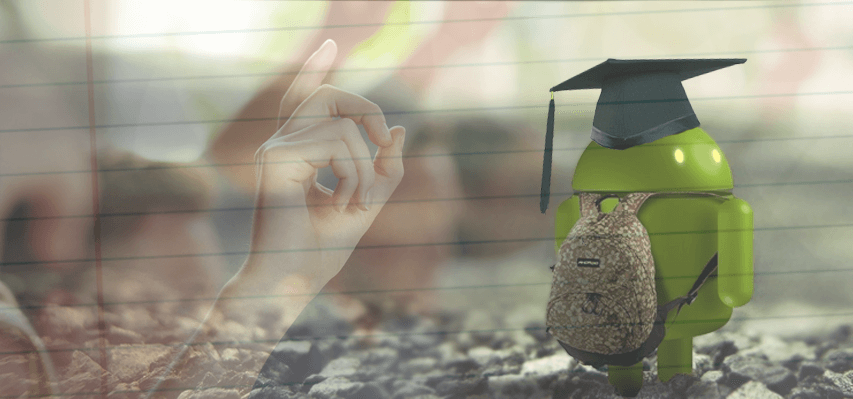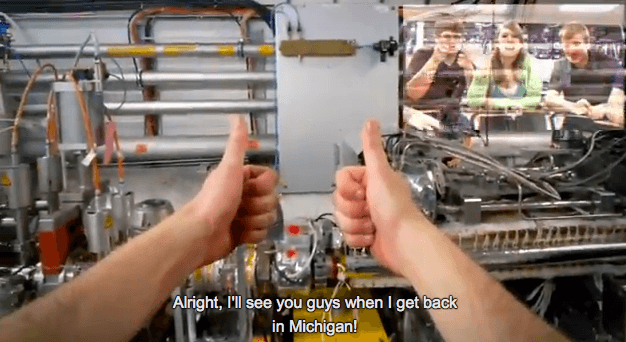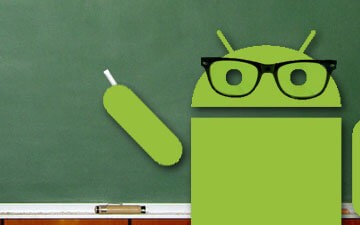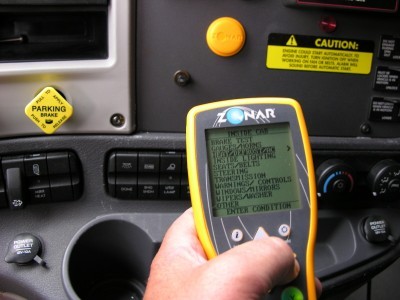
- Markets
- Solutions
- Services
- Innovations
- Resources
- About Us
- Careers
- Contact Us
November 13, 2013

Classrooms provide many of us with our first exposure to a new technology and innovation. It’s in these classrooms where we feel safe to experiment, explore, and sample. It shouldn’t be surprising, then, that many K-12 school districts across the country are adopting new Android technology not only to engage students, but to make the school system more efficient and connected.
Vanden Heuvel won a contest (#ifihadglass) for a chance to be one of the first to sample Google Glass’ capabilities. Using his new Android-powered accessory, he traveled to places like the Large Hadron Collider wanting his students to see and hear the things he was seeing and hearing at these places of scientific significance. Capturing it all with Google Glass, his students could be “in the room” with him, listening to the lesson while standing next to the Collider in Switzerland.

Although this doesn’t replace seeing with your own eyes, it certainly helps to bring the curriculum to life while saving on field trip expenses and liabilities. And using a program like Trello or Asana (both found in the Google Play store) assignments can be disseminated, graded and returned, so learning doesn’t stop just because the teacher is away. Instructors around the world can connect to hundreds of classrooms and students can watch scientific discoveries as they are happening in real time.
The implementation of technology in the classroom is often talked about when it impacts the way students learn, but there is another segment of Android OS tools that are helping teachers organize and save time to…well…teach! Gradebook Pro is a great example of how instructors are using Android to streamline the traditional binder and notebook style of grading into a digital record. Most grading applications have easy-to-use report card functions taking the diligent data entry and producing easy to read report cards with weighted grading capabilities, among others.

Along those same lines, schools are slowly integrating software that makes it possible for parents to get real-time access to their child’s grades. Grades are entered into the database and parents can opt to receive notifications if their child doesn’t turn in their homework. Gone are the days when parents are only updated during rare parent teacher conferences. Your son hasn’t turned in an assignment in six weeks!
Programs like Edupoint train administrators, educators, and parents on the technology and offers full support to districts that might need some coaching on how the product can help. As you might guess, students are less than thrilled by the tech-savvy early administrative adopters, but increased communication makes it easier for parents to spot problems and help their child succeed.

In a world where people sometimes miss the good ol’ days, certain technologies come along that make us remember how nice it is to live in the 21st century. One such technology is Zpass by Zonar Transportation Systems for school districts. Using RFID technology combined with the open Android system, Zpass allows administrators to track buses using GPS to monitor logistics, and if need be, to help calm frantic parents. This turns the chaotic after school transportation dance into a synchronized practice.
